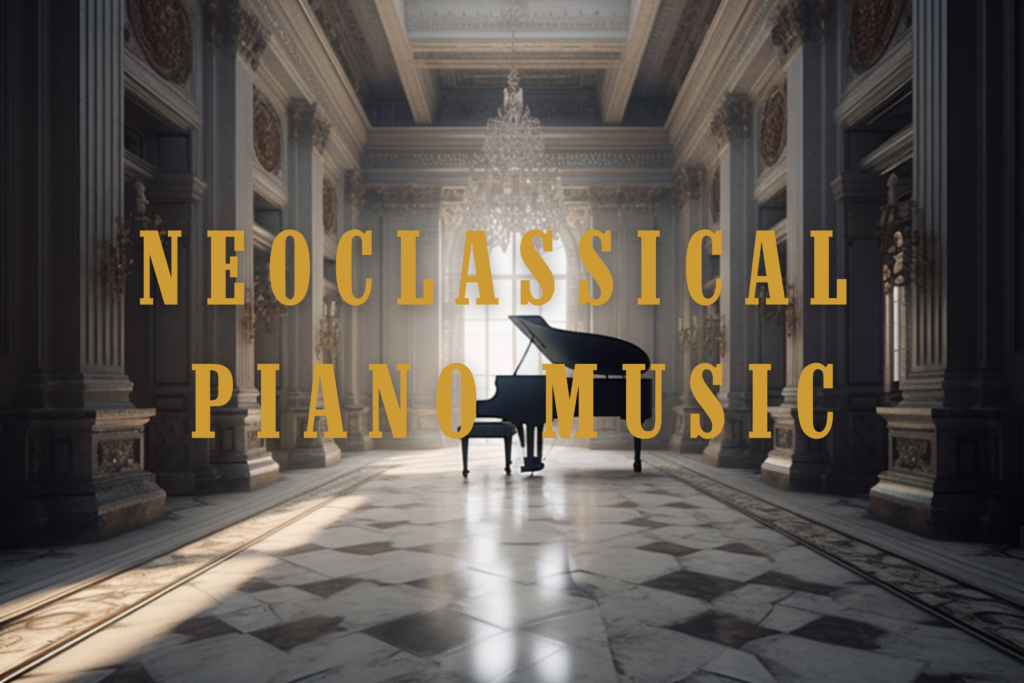Uncategorized
Neoclassical Piano Music: Timeless Elegance
Neoclassical Piano Music
What’s Neoclassical Music
In the realm of classical music, the Neoclassical era emerged as a fascinating period that witnessed a revival of classical forms and aesthetics. Neoclassicism sought to recapture the spirit of the Classical era, particularly in the realms of literature, art, and music. This article focuses on the enchanting genre of Neoclassical piano music, exploring its origins, characteristics, notable composers, and enduring legacy.
Origins & Characteristics
When did Neoclassical music start?
The Neoclassical movement in music took shape in the early 20th century as a reaction to the extravagant and emotionally charged music of the Romantic period. Composers of this era sought to return to the clarity, balance, and restraint of the Classical era, drawing inspiration from composers such as Bach, Haydn, and Mozart.
Neoclassical Music Features
Neoclassical piano music embodies simplicity, elegance, and intellectual clarity while maintaining a unique artistic identity. Neoclassical music emphasizes clarity of form, structure, and melody. It strives for simplicity and avoids excessive ornamentation or emotional indulgence. The focus is on balanced and transparent musical textures, where each voice or instrument has a distinct role.
This musical movement draws inspiration from the musical forms and structures of the Classical era, such as sonatas, minuets, rondos, and variations. These forms are often used in a manner that reflects the composer’s style and interpretation.
Contrapuntal Writing
Neoclassical piano music often incorporates contrapuntal writing, which refers to the interplay of multiple independent melodic lines. Counterpoint creates intricate and layered textures, showcasing the composer’s skill in weaving different musical voices together. The music generally employs diatonic harmonies, relying on the traditional major and minor scales. Chromaticism and dissonance are used sparingly, with a preference for consonant and balanced harmonies that contribute to the overall sense of clarity and elegance.
The music often features regular and well-defined rhythmic patterns. The meter is typically straightforward and consistent, with the use of regular time signatures like 4/4, 3/4, or 2/4. Syncopation and complex rhythmic variations are less common, as the emphasis is on maintaining a clear and steady pulse.
Unlike the Romantic era, Neoclassical era of music tends to exhibit emotional restraint. The focus is on intellectual expression rather than deep emotional turbulence. The music evokes a sense of poise, control, and refined aesthetics.
Balancing Tradition and Innovation
Neoclassical composers strive to strike a balance between honouring the traditions of the past and incorporating their unique musical voice. They pay homage to classical forms and aesthetics while infusing their compositions with contemporary elements and personal artistic sensibilities.
The piano plays a significant role in Neoclassical piano music, with composers exploring the instrument’s capabilities for nuanced expression within the framework of classical structures. Coexist a clear emphasis and precise phrasing and articulation. Each musical phrase is shaped with intention and attention to detail, allowing for the expression of subtle nuances and the communication of the composer’s musical ideas.
Neoclassical music invites intellectual engagement from both the composer and the listener. It often reflects the compositional techniques and stylistic elements of earlier periods while incorporating modern approaches. Neoclassical compositions can be thought-provoking and intellectually stimulating, rewarding attentive and discerning listeners.
Neoclassical Musicians
A prominent figure in the Neoclassical movement, Satie’s piano compositions are known for their delicate simplicity and subtle harmonic textures. His most famous works, such as the “Gymnopédies” and “Gnossiennes,” evoke a sense of tranquillity and introspection.
Although primarily known as a composer in the realm of ballet and orchestral music, Stravinsky’s influence on Neoclassical piano music is significant. His groundbreaking composition “Pulcinella Suite” reinterprets music from the Baroque era, infusing it with a modern sensibility.
Poulenc’s piano compositions embody the essence of Neoclassical elegance. His “Trois mouvements perpétuels” and “Nocturnes” showcase his knack for blending simplicity and complexity, resulting in a charming and melodic sound.
Enduring Legacy
Neoclassical piano music continues to captivate audiences with its timeless allure. It has found resonance in both traditional classical music circles and contemporary settings. Its minimalist aesthetic and refined approach has influenced subsequent generations of composers, expanding the boundaries of classical music.
Modern composers have embraced Neoclassical elements in their compositions, adding new dimensions to the genre. The music of Ludovico Einaudi, Yiruma, and Max Richter demonstrates how Neoclassicism has seamlessly transitioned into the 21st century, resonating with a broader audience.
Moreover, Neoclassical piano music has found a place in film scores, creating atmospheric and evocative soundscapes. Composers like Alexandre Desplat, Philip Glass, and Yann Tiersen have embraced the elegance and emotional depth of Neoclassicism, enriching cinematic experiences with their compositions.
CONCLUSION – Neoclassical Piano Music
Neoclassical piano music represents a harmonious blend of classical traditions and contemporary sensibilities. Its enduring charm lies in its ability to captivate listeners with its simplicity, elegance, and timeless beauty. From the delicate melodies of Erik Satie to the refined compositions of Igor Stravinsky and Francis Poulenc, Neoclassical piano music continues to inspire and enchant audiences across generations. Its legacy lives on, evolving and adapting to the ever-changing musical landscape, ensuring its place as a cherished genre in the rich tapestry of classical music.

